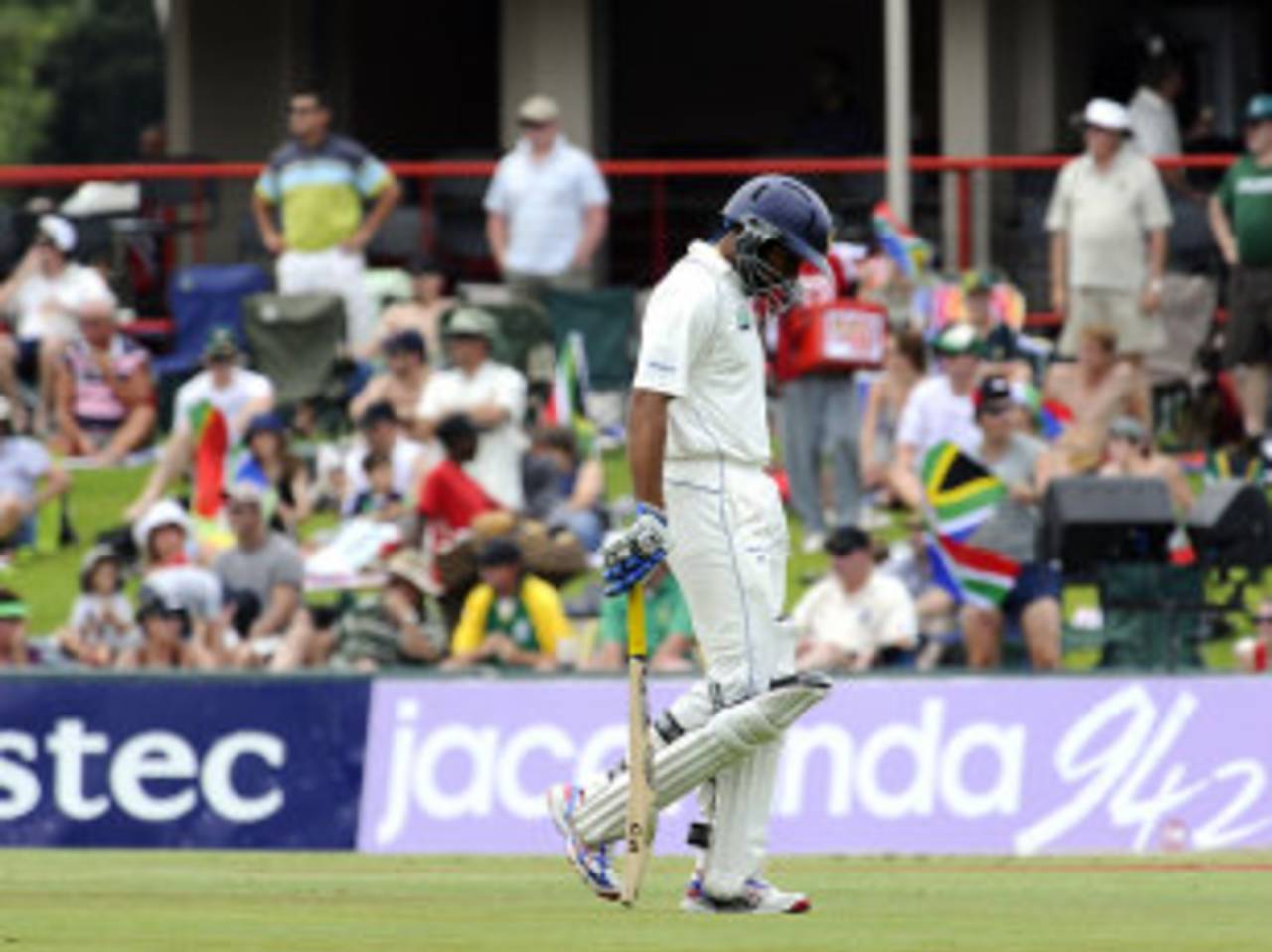Would you have any motivation if the company you worked for was in a corporate governance tangle messier than Lasith Malinga's hair? If that company had not had elections in the last seven years and had run by a series of committees who changed more frequently than the number of teams in the IPL and with far greater impact? And most importantly, if you had not been paid in nine months?
Sri Lanka's cricketers have managed to keep going, albeit it without much success, in spite of all of the above. Allegedly, they have come to South Africa more interested and with greater focus than they have had in any other series this year.
That has included a tour of England, in which a nightmare session in
Cardiff saw Sri Lanka skittled for 82, a home series against Australia where the dustbowl at
Galle gave Australia victory and a trip to the UAE where rain in
Sharjah denied Sri Lanka a Test win. Now, in the country where flat-track bullies come to die and with injuries to five fast-bowlers, Sri Lanka arrived with a smidgen of self-belief and heaps of hope.
So far, it has all came to nought. They were written off every time they were written about and in the end they lived up, or rather down, to their reputation and were solidly and comprehensively beaten.
More concerning than the loss itself was the manner in which it came. The lack of application and commitment from Sri Lanka's batsmen, albeit against a quality attack who exploited their home conditions well, was astounding and the ease with which they gave up was alarming. Everyone from
Tillakaratne Dilshan to Rangana Herath succumbed to an inability to read the lengths the South African bowlers presented them with. Eight batsmen were caught by the wicket-keeper or in the slips in a second innings showing that was more dismal than the first.
Between being told to be positive, without being rash, and cautious without being tentative, it's little wonder that Sri Lanka's batsmen are somewhat confused.
It's unlikely they were thinking of their pay cheques or their board when they edged behind and even unlikelier that their bank accounts were full, the edges would have become solid drives, but it's clear that something is plaguing Sri Lankan cricket. In an excuse that sounded almost Mahmudullah-eqsue in nature, Dilshan revealed that he does not know exactly what it is that stops Sri Lanka from translating their net practices into on-field performances.
"We are working hard in the nets, but we are not able to carry it into the middle," he said. "We have two batsmen close to 10,000 runs [Mahela Jayawardene and Kumar Sangakkara] but as a batting group, we have not been clicking well over the last few months."
Over-reliance on the two big names could be part of the problem. Even when Dilshan and Tharanaga Paranavitana had been dismissed, it was when
Vernon Philander worked over Kumar Sangakkara that the sense that real trouble had hit Sri Lanka's ranks emerged.
When Mahela Jayawardene was run-out attempting to make his 10,000th Test run, an innings defeat seemed inevitable. Even Dilshan admitted that the once the milestone is out of the way, a burden will be lifted. "I think if he got 10,000 runs, after that he might have had a free mind," Dilshan said.
As a unit, Dilshan said that responsibility has to be taken by all but he did not signal out anyone else in the line-up. The middle-order appears brittle, Prasanna Jayawardene is being missed and the game-plans are not being thought out with the required depth to play in foreign conditions.
Marvan Atapattu said Sri Lanka had to be "positive" when they approached their second innings. It appears that that instruction is being misunderstood by some players, adding another dimension to their issues. Dilshan's first innings shot was an example of it. Atapattu wants his batsmen to look to AB de Villiers' innings as an example of how to play on South African surfaces. "Anything outside the off stump, look to score off and anything pitched up," he said.
Instead, Sri Lanka were strangled by fuller deliveries, particularly by Vernon Philander's show of bowling just outside off and getting the ball to nip around. They showed unnatural restraint and fell apart as a result. "If you are tentative on a wicket like that, you won't get many places," Graeme Smith, South Africa captain, said.
Between being told to be positive, without being rash, and cautious without being tentative, it's little wonder that Sri Lanka's batsmen are somewhat confused. Dilshan said he only needs the batting problems to be fixed in order for his side to be competitive because the bowlers will be able to produce in seamer-friendly conditions. "If the batting unit can put runs on the board, I feel we can bowl them [South Africa] out if we are given this kind of wicket, with help for the fast bowlers," he said. "If we can put some runs on the board, we know we can put pressure on the South African team."
But finding those runs seems to be a beyond the Sri Lankan batsmen. Dilshan has repeatedly insisted that the board issues are not troubling the team, that they can't control what is happening at management level, and in a tone that sounds almost like a plea for help that Sri Lanka are just "trying to play our best cricket".
That may be the case, but the environment in which Sri Lanka have to play their cricket is not one that facilitates a culture of success or development. The shop's backroom is a shambles so their outside display can hardly be perfect. Although Sri Lanka's cricketers have been trying to do a window-dressing act for months, their abysmal form see some questions being asked about what is really the source of their current problems.
Firdose Moonda is ESPNcricinfo's South Africa correspondent
